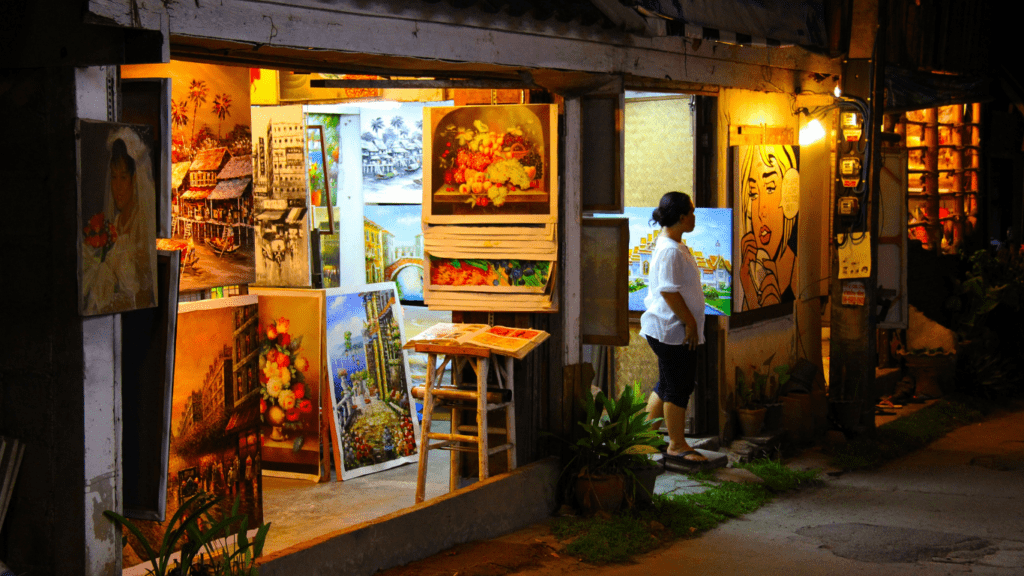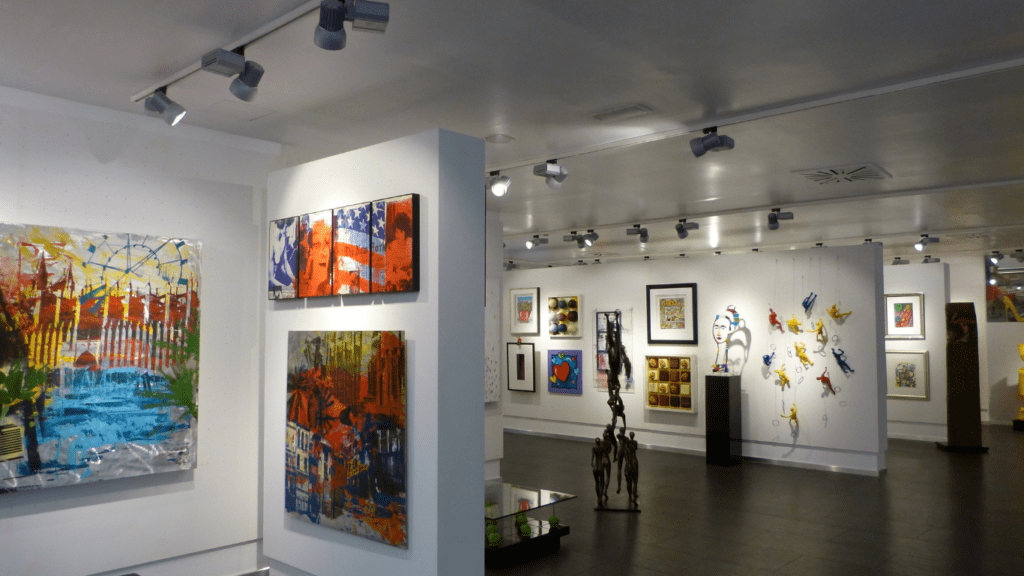Understanding the Art Market
Understanding the art market is crucial for opening a successful gallery. Developing a deep knowledge of art trends and identifying your niche can set you apart from the competition.
Researching Art Trends
Researching art trends offers insight into what buyers are looking for. I monitor art fairs, gallery exhibitions, and online platforms. Staying updated with industry reports and art market analyses helps identify emerging artists and popular styles.
I consult resources like Art Basel’s Art Market Report and databases like Artsy and Artprice to gain data-driven insights. These steps let me curate collections that appeal to current tastes and forecast future demand.
Identifying Your Niche
Identifying your niche focuses the gallery’s vision. I consider the type of art that excites me and resonates with my audience. Specializing in a particular genre, such as contemporary art or photography, attracts a dedicated clientele.
I analyze local demographics and preferences to ensure my chosen niche meets community interests. This targeted approach helps build a distinct brand, making my gallery a destination for specific art enthusiasts.
Planning Your Art Gallery
Planning serves as the foundation for a successful art gallery. Effective preparation reduces risk and increases the chances of longevity.
Choosing a Location
Selecting the right location is crucial. High foot traffic ensures visibility, making downtown areas or busy streets ideal. Research rental costs in various neighborhoods and compare them against your budget.
Proximity to other cultural spots like museums or theaters can boost footfall. Accessibility and nearby parking options matter for potential visitors, especially during events or exhibitions.
Business Plan and Budgeting
A detailed business plan outlines your strategy. Begin by defining your mission and unique selling proposition (USP). Include market analysis that examines competitors and potential customers.
Detail your marketing and sales strategies, specifying both offline methods like local advertising and online tactics such as social media promotion.
Budgeting lays the financial groundwork. Calculate initial costs, including lease, renovations, and initial inventory. Estimate ongoing expenses like utilities, staff salaries, and marketing efforts.
Secure funding through loans, grants, or investors before opening. Track financials using software to avoid overspending and ensure profitability.
Legal Considerations
Navigating legal considerations ensures your art gallery operates smoothly and compliantly. It involves obtaining necessary licenses, permits, and handling copyrights effectively.
Obtaining Licenses and Permits
Get the appropriate licenses and permits before opening the gallery. Check local regulations to determine what’s required in your area. Typically, you need a business license from the city or county.
Verify zoning laws to ensure the chosen location is suitable for a gallery. Contact the local health department if serving food or beverages at events.
You may need an alcohol license if you plan to serve wine or other alcoholic drinks during exhibitions. Consult local business resources or a legal professional to avoid missing essential permits.
Copyrights and Contracts
- Safeguard artists’ copyrights and outline contracts clearly to protect all parties involved.
- Artists retain copyrights for their work unless explicitly transferred.
- Draft clear consignment agreements specifying terms like commission percentages, payment schedules, and duration of display.
- Ensure contracts cover liability issues, detailing who handles insurance for the artworks.
- Address reproduction rights in contracts to clarify how artwork images can be used for promotion.
- Consulting an intellectual property lawyer can help create robust contracts, ensuring all legal aspects are covered efficiently.
Setting Up Your Gallery Space

Designing an inviting gallery space sets the tone for visitors and showcases the artwork effectively.
Interior Design and Lighting
Choosing the right interior design and lighting enhances the gallery experience. I select neutral wall colors to let the artwork stand out, avoiding bold shades that might clash.
I invest in high-quality, adjustable track lighting to highlight each piece, ensuring it’s seen in the best light. Art placement is strategic; eye-level displays make it easy for visitors to engage with the artwork. I incorporate seating areas to provide comfort for patrons while they appreciate the art.
Security and Insurance
Implementing robust security measures protects the gallery and its art. I install security cameras at various points, focusing on entry points and high-value artworks. Alarm systems and motion detectors add an extra layer of protection. Display cases with locks safeguard smaller, valuable items.
Insurance coverage is crucial for financial protection. I work with a reputable insurer specializing in art galleries, ensuring comprehensive coverage for theft, damage, and natural disasters.
Each piece’s value is documented to guarantee accurate reimbursement. Additionally, I review policies annually to adjust for new acquisitions or changes in the gallery’s layout.
Promoting Your Art Gallery
Promoting an art gallery is a critical step in ensuring its success. Effective strategies for marketing and engaging the community elevate your gallery’s profile and attract art enthusiasts.
Marketing Strategies
First, create a strong online presence. Develop a professional website featuring high-quality images of your artwork, artist bios, and an events calendar. Search engine optimization (SEO) techniques help increase visibility on search engines.
Second, leverage social media platforms. Platforms like:
cater to art communities. Post regularly and include behind-the-scenes content, artist interviews, or time-lapse videos of gallery setups to engage your audience.
Third, cultivate an email list. Use newsletters to inform subscribers about upcoming exhibitions, artist features, and exclusive previews. Email campaigns make direct communication with potential clients and art lovers possible.
Fourth, collaborate with local businesses and influencers. Partner with cafes, bookstores, or boutiques to display artworks. Influencer collaborations boost reach by tapping into their followers, fostering wider community engagement.
Hosting Opening Events
Plan memorable opening events to attract visitors and press. Invite local artists, art critics, and community leaders. Provide live music, refreshments, and interactive elements like artist talks or live demonstrations to create an immersive experience.
Send press releases to local media outlets. Coverage by newspapers, blogs, and magazines increases visibility. Reach out to arts journalists and bloggers personally to invite them, ensuring media attention for your gallery.
Utilize RSVP systems for better guest management. Collect guest information for future marketing efforts while ensuring an organized event. Use these occasions to network, build relationships, and convert attendees into long-term patrons.
Effective event promotion and marketing strategies build awareness, foster community connections, and drive gallery success.


